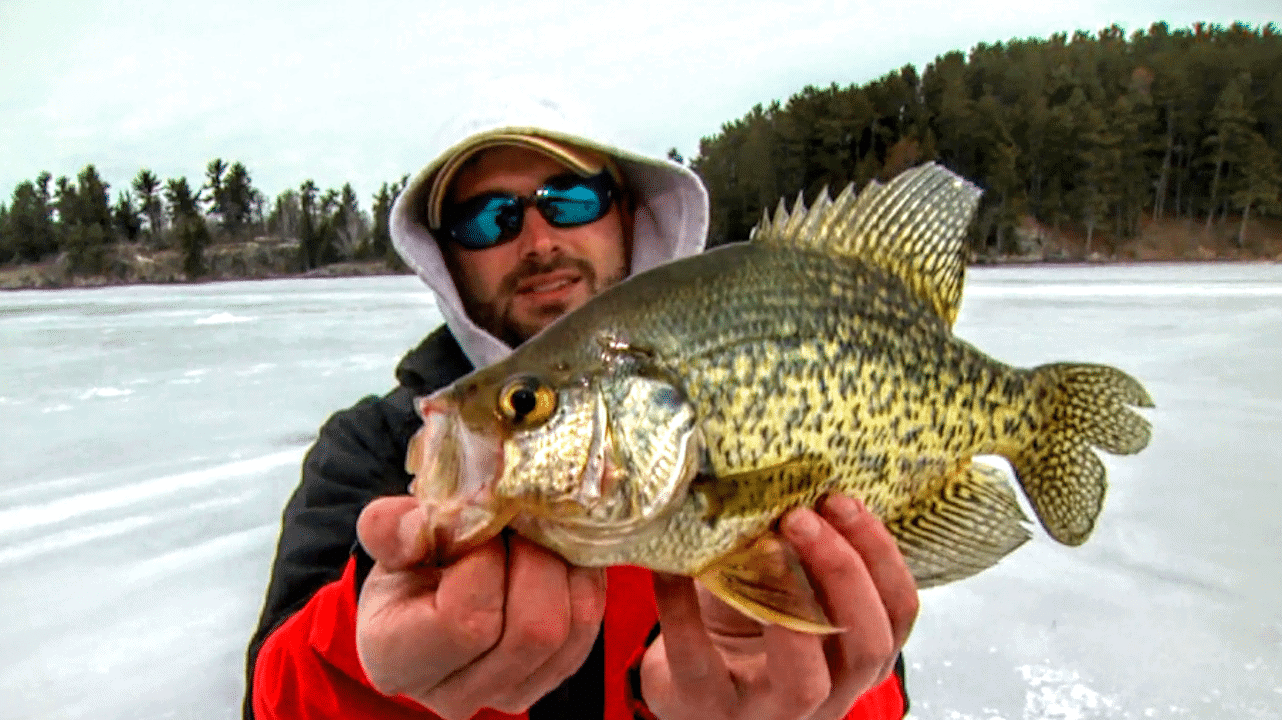During early winter, crappies favor modestly deep basins in the 20- to 40-foot range. Large schools of fish tend to be near bottom, where simple jigging tactics produce loads of action and excitement.
Introduction
When it comes to ice fishing, there’s nothing quite like the thrill of catching a crappie on your first hole of the day. While they may not always be big fish, it’s a promising start. The thing about crappies is that you never know when you’ll stumble upon a group of big ones. In this article, we’ll explore the strategy of fishing middepth basins for crappies on ice and how to increase your chances of finding the mother lode.
Using Flashers to Locate Fish
One of the advantages of using flashers while ice fishing is that they allow you to quickly assess whether a hole is worth fishing or not. In basins like the one we’re fishing today, there’s often a lot of dead water. If you were to fish every hole, it would take a long time to catch a decent number of fish. However, by drilling a series of holes and using a flasher, you can easily determine if there are fish present a couple of feet off the bottom. This saves you time and effort, as you can focus your attention on the holes where fish are actually located.
The Importance of Location
When it comes to ice fishing for crappies, location is key. In small shallow lakes with basins less than 30 feet deep, crappies may move to the deepest water in the lake during the early to mid-winter months. While the lake itself may be small, the basins can fish quite large due to their featureless nature.
To effectively fish these basins, a two-person strategy works well. One person can start by punching holes in the core of the basin, while the other drills around the rim. This allows you to cover a larger area and increase your chances of finding the crappies.
Essential Tools for Crappie Fishing
When it comes to ice fishing for crappies, there are two essential tools you’ll need: a good auger and a sonar. A good auger will allow you to drill multiple holes quickly, which is important when you’re on a crappie mission. It’s not uncommon to drill 100 holes a day in search of these elusive fish.
Sonar is another essential tool for crappie fishing. It not only reveals the presence of fish but also provides information about their depth. In larger, deeper, and more complex bodies of water, it’s important to have a clear understanding of where the crappies are located. Sonar can help you identify high percentage areas where the crappies are likely to be found.
Approaching Larger, Deeper Bodies of Water
In larger bodies of water with more complex structures, it’s important to approach the fishing strategy differently. Crappies in these types of systems tend to avoid the very deep basin areas. Instead, they can be found in basins in the 20 to 40-foot depth range near large weed flats and points of the mouths of bays. These areas are great starting points for your search.
To make the task less overwhelming, think of each basin as a lake within a lake. By using electronic mapping, you can quickly eliminate large portions of water and focus your efforts on high percentage areas. This approach allows you to maximize your chances of finding the crappies and reaping the rewards.
Conclusion
Ice fishing for crappies in middepth basins can be a rewarding experience. By using flashers to locate fish, employing a two-person strategy, and utilizing essential tools like a good auger and sonar, you can increase your chances of finding the mother lode. Remember to focus your efforts on high percentage areas such as basins near weed flats and points of the mouths of bays. With the right approach and a little bit of luck, you’ll be reeling in crappies in no time.










